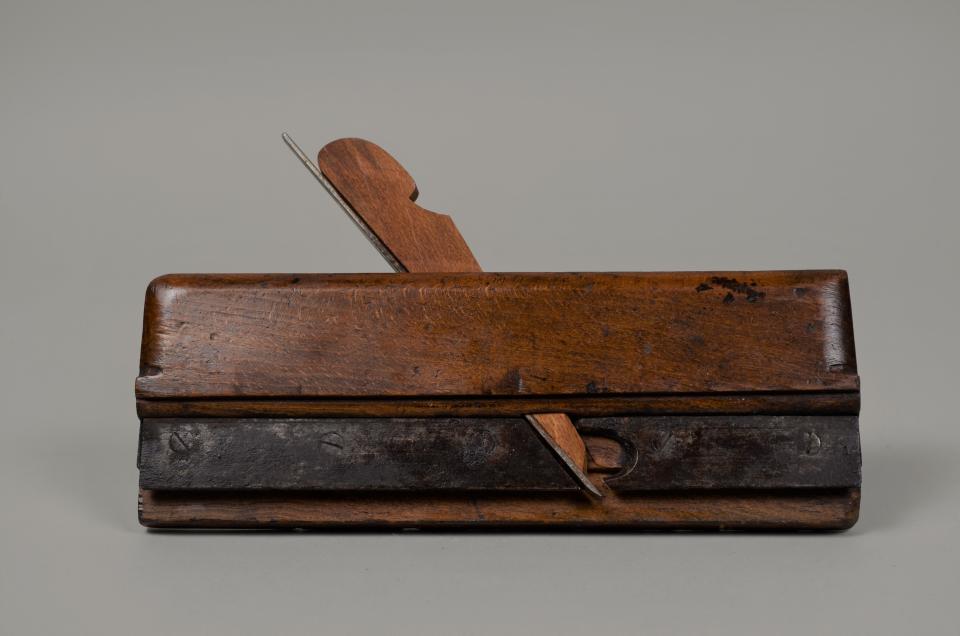
L: 24.0cm W: 2.5cm H: 15.8cm
a- L: 24.0cm W: 2.5cm H: 8.3cm
b- L: 15.2cm W: 2.4cm H: 0.7cm
c- L: 17.5cm W: 0.7cm H: 0.2cm
A wooden grooving plane consisting of 3 parts.
a- The body is rectangular and made of a brown hardwood. The top half of the body protrudes forward while the bottom half protrudes back. A dark metal plate sits underneath the front cheek and is secured by 5 slotted screws. The sole is very narrow and flat. The back edge of the sole extends down to form a fence. Stamps on the toe read: "BURNSIDE&/ARUNDAL"; "I BLOWER". Stamps on the heel read: "W W"; "I BLOWER"; "4".
b- The wedge is made of a light brown hardwood. It tapers to a blunt point on one end and is rounded in an oblong form on the other. A small cut-out below the head allows for easy handling.
c- The iron is a narrow strip of light grey metal. The width is consistent throughout. It tapers to a chisel edge at the very end. The width of the cut is 1/4".
Grooving planes are used to cut straight grooves, or rabbets, into a working piece. They are traditionally used for drawer bottoms or rear walls. They can be used in conjunction with a corresponding tonguing plane, which creates two parallel slits in a piece of wood. These create two pieces that fit together perfectly for joining work. Other names include dado planes, ploughing planes and matching planes when combined with a tonguing plane.
